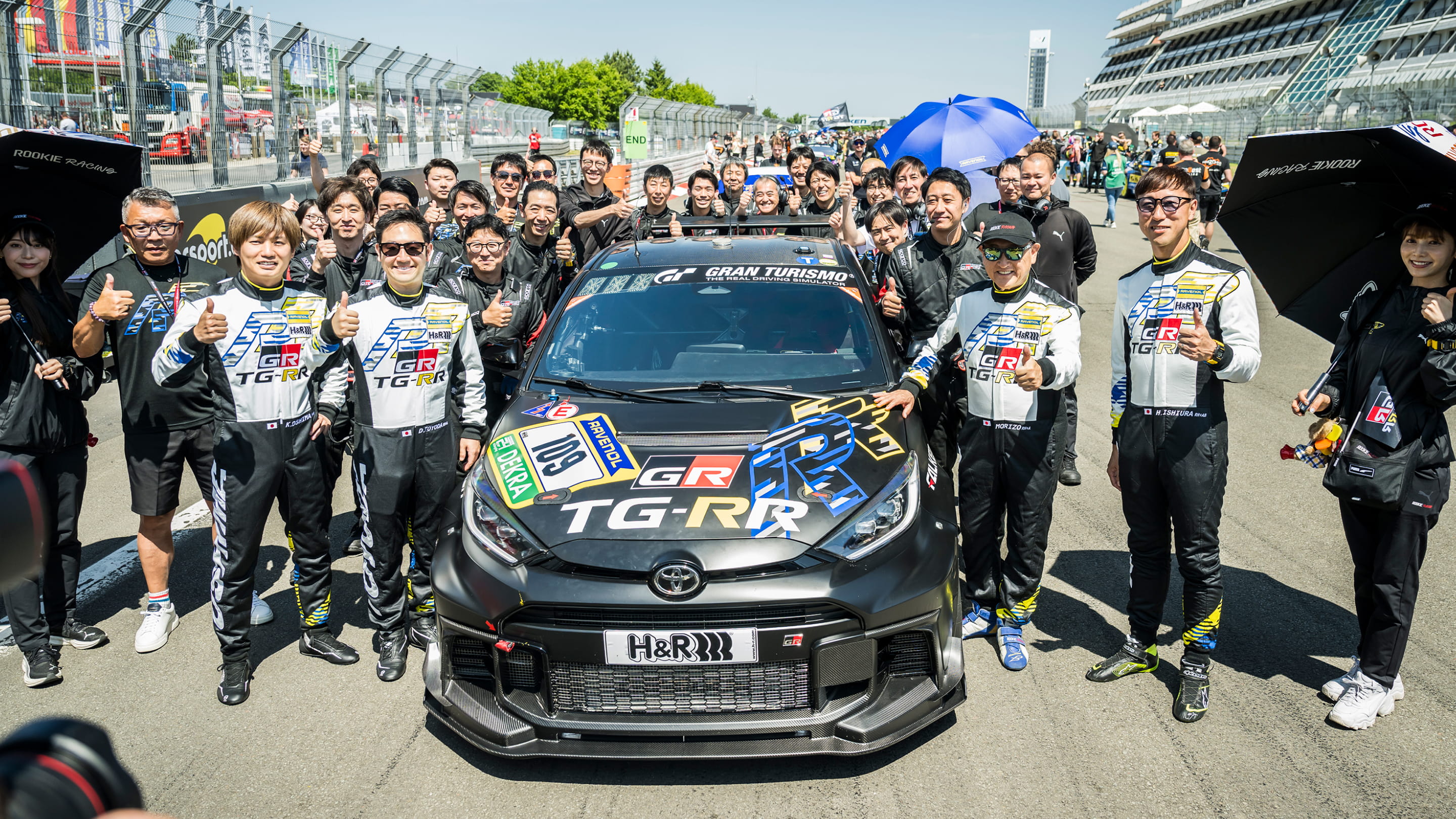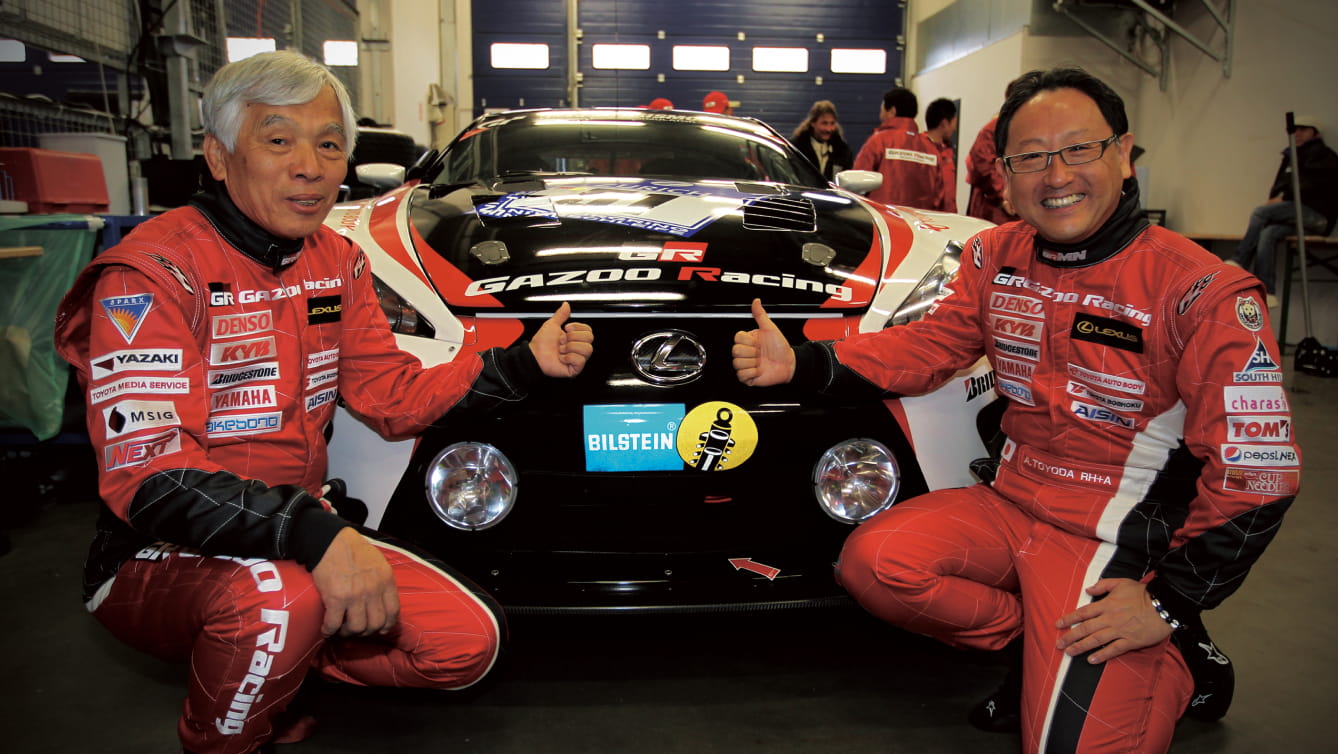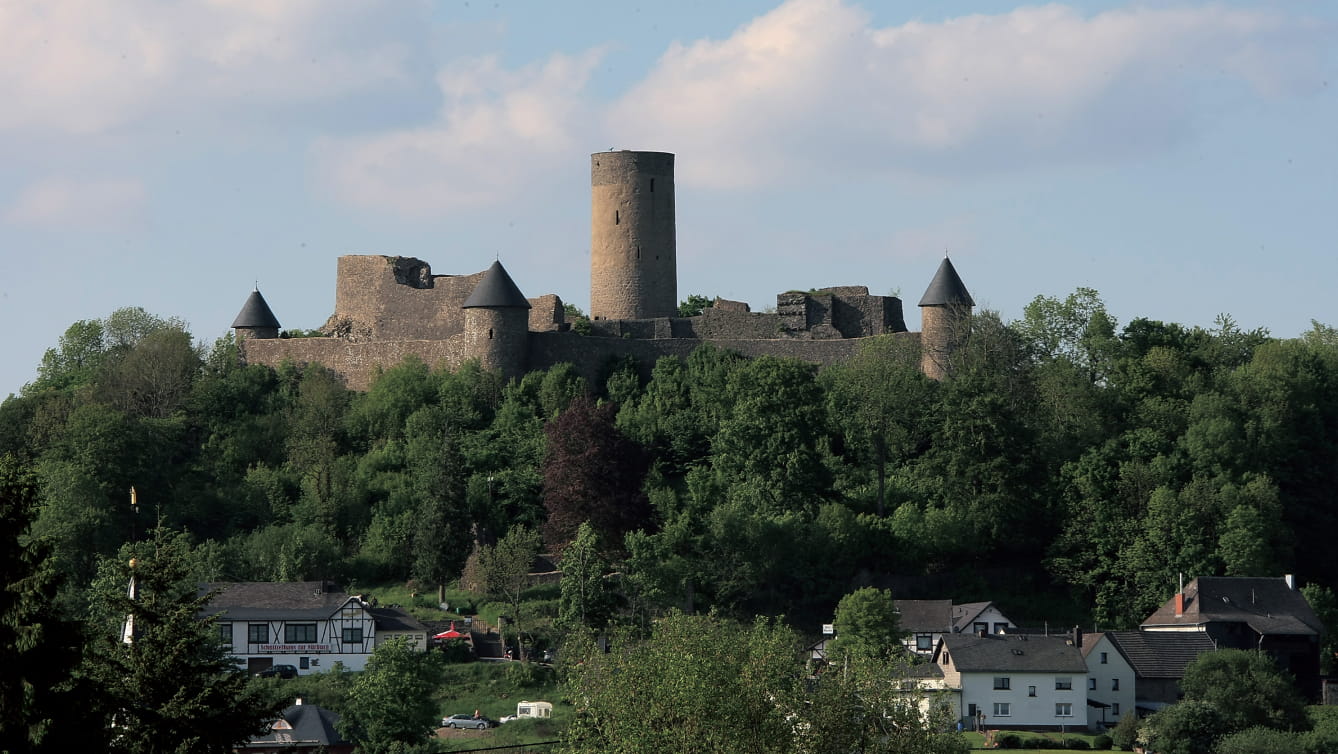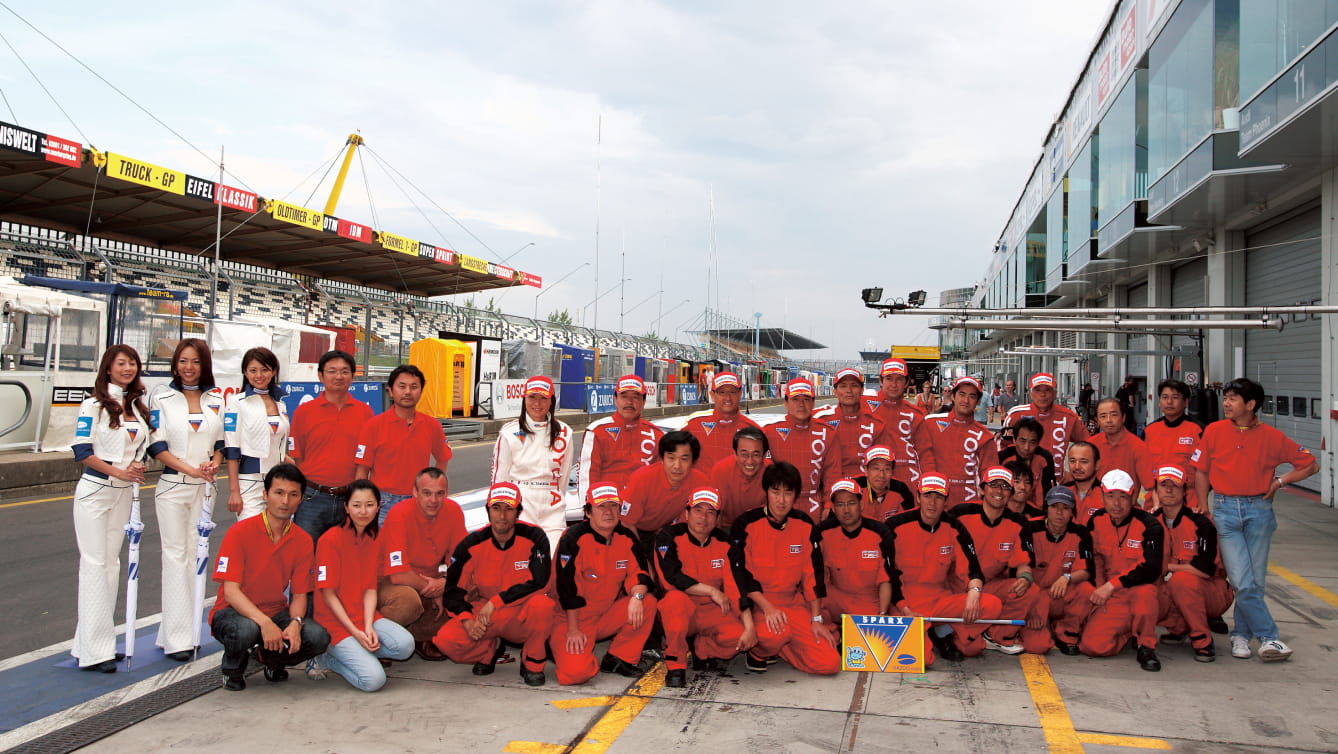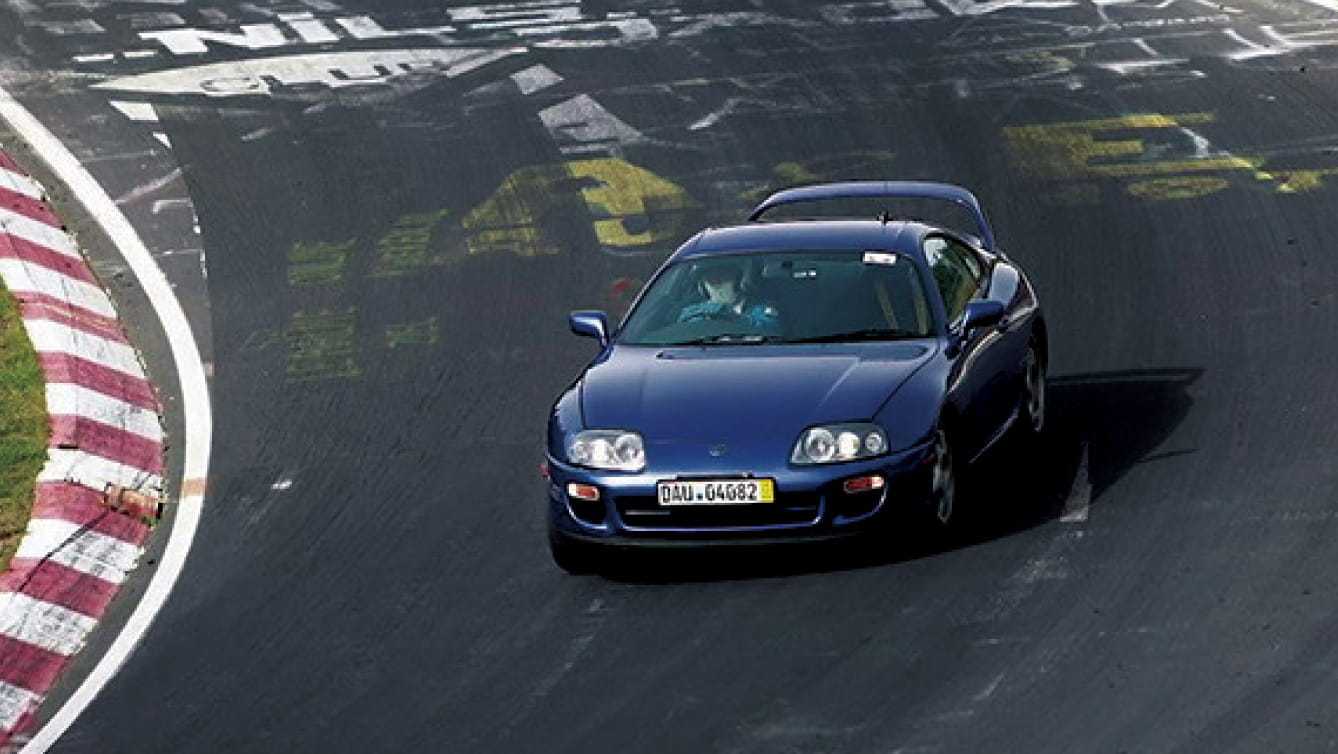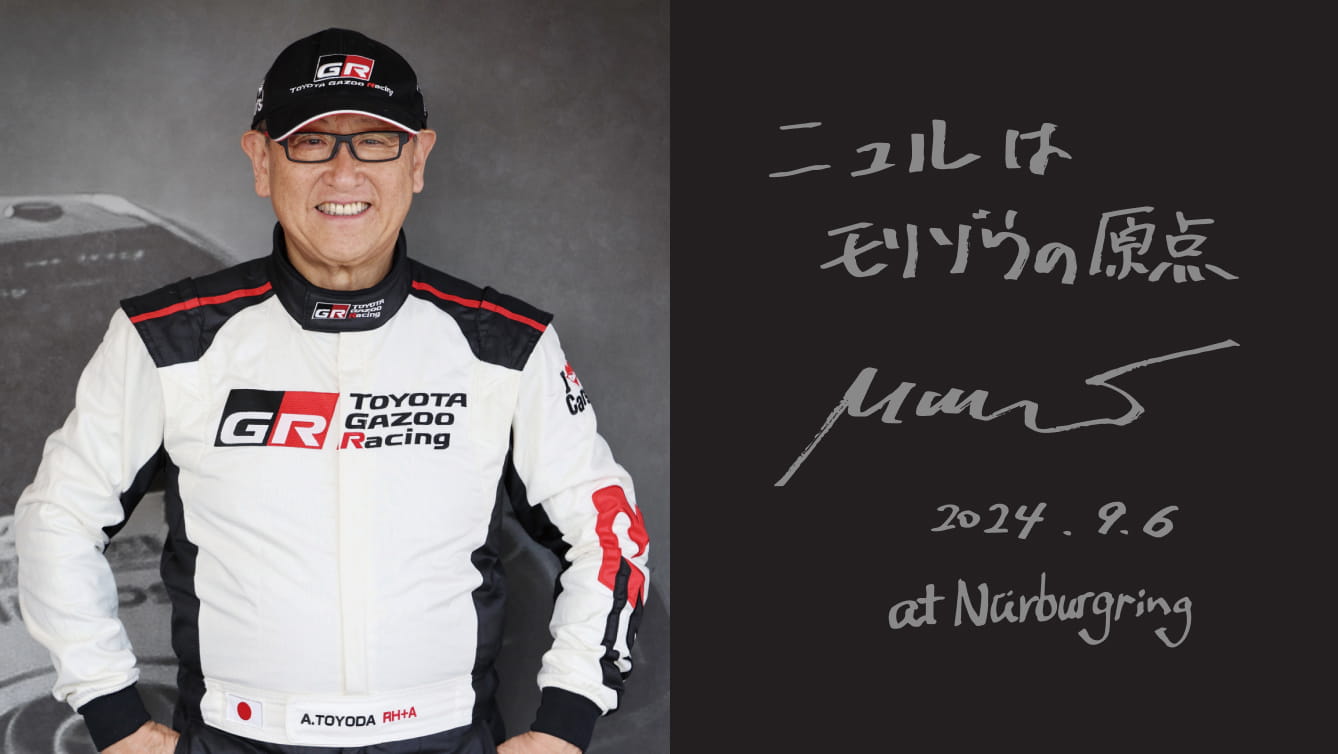Taking on Challenges as TOYOTA GAZOO Rookie Racing (TGRR)
In 2025, Toyota competed in the Nürburgring 24 Hours endurance race for the first time in six years. The team raced as TOYOTA GAZOO Rookie Racing (TGRR), which was a unified effort combining TOYOTA GAZOO Racing (TGR). TGR is composed of employees from Toyota Motor Corporation, and the professional race group ROOKIE Racing (RR).
This collaboration between TGR and RR is reminiscent of the Corolla H2 Concept that has been competing in the ST-Q class in the Super Taikyu Series since 2021. Until the new collaboration, RR had been contracted to handle the development of GR. In contrast, the formation of TGRR has removed organizational boundaries and created a more integrated system. In other words, Toyota engineers/mechanics and RR professionals are working toward the same goal of creating ever-better cars. They are now a group that has come together by role rather than by position or job title.
Morizo, who fulfills roles in both organizations, described the collaboration as a challenge toward “a fresh start for our pursuit of making ever-better cars.” But why is the collaboration described as a “fresh start?” The answer to this question lies in the history of GR’s involvement in the Nürburgring 24 Hours.
The first challenge in 2007 was undertaken by the original GAZOO Racing team, which was founded by Akio Toyoda (who races under the name of Morizo) and master driver Hiromu Naruse (deceased). The team’s goal was to refine people and cars through motorsports, leading to the creation of ever-better cars; in other words, to realize the ultimate in human resource development.
Toshiyuki Sekiya, who has been involved in these activities since 2008 and now serves as the GM of TGRR, reflects on the activities of GAZOO Racing as follows:
“Our initial activities for Nürburgring were led by people on the frontline. This was based on Naruse’s conviction that cultivating frontline staff was essential to developing engineers. Staff working on the frontline were capable of building outstanding one-off prototypes, but only engineers were capable of achieving mass production for those prototypes. That’s why Naruse focused on first strengthening frontline staff—so that we could then train the engineers.”
The Nürburgring project started unofficially; they could even be called “guerilla” activities. Accordingly, the company did not allow the team to use the Toyota name at first. Instead, they called themselves GAZOO Racing. Although the team may have appeared to have the backing of the factory, but it was actually run completely by privateers. They raced with two used ALTEZZA purchased from Netz Toyota Gunma and scraped together a budget through their own sponsorship efforts.
Morizo described the start of activities as a “lonely struggle.” Nevertheless, the efforts gradually gained understanding and support from members within the company. By 2016, ten years after beginning its activities, the team was officially recognized as TOYOTA GAZOO Racing. Even more, the team’s cars evolved from simply strengthening pre-production prototypes to testing advanced technologies for the future.
However, for better or for worse, the scale of the team’s activities grew as this challenge became institutionalized. It cannot be disputed that activities began to shift in a direction different from the original intent.
Morizo explained this change as follows:
“When it comes to racing, some people only focus on the results. However, I believe that the process is what matters most. The most important thing about our activities is that they aren’t the ultimate goal—instead, they are the starting point for making ever-better cars. Our racing activities only have value if this point is understood. Unfortunately, the significance of our program became diluted over time. There were moments where I felt that we had strayed from our true purpose. For that reason, I felt that we must return to our origin (making ever-better cars through the frontline of motorsports).
Three cars competed in the Nürburgring 24 Hours: Car No. 109 is a GR YARIS DAT, Car No. 110 is a GR Supra GT4 EVO2, and Car No. 382 is a GR YARIS DAT that will support Car No. 109. The numbers 109 and 110 carry special meaning. They are the same numbers of the two ALTEZZA in the 2007 debut, and therefore symbolize a return to the team’s roots. Car No. 109 also bears a name sticker reading “H. NARUSE” next to “MORIZO” to honor the late master driver. The team’s pit area displays a photo of Naruse in his red racing suit, and the second-floor lounge exhibits his TGRR-spec suit. Even now, the team continues to race together with Naruse.
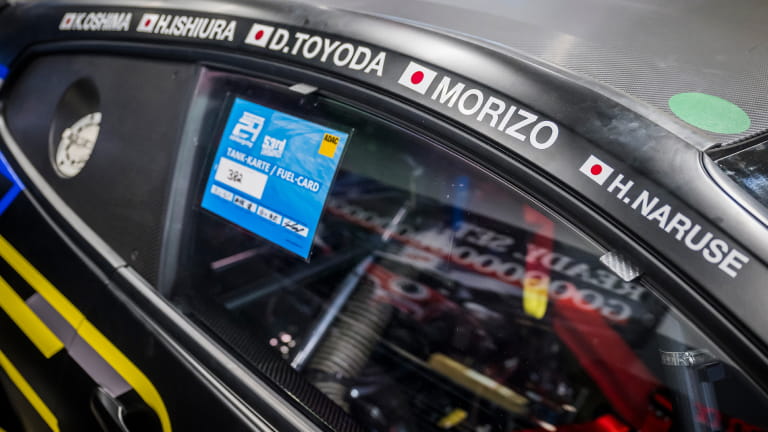
Cars which raced at previous Nürburgring 24 Hours included the Lexus LFA, 86, and GR Supra, which were prototype models that competed before their commercial launch, as well as development vehicles based on the LFA CodeX (2014/2015) and the LC (2018/2019). In comparison, the cars competing in the 2025 Nürburgring 24 Hours seem a bit more reserved. Chief Engineer Kei Hisadomi gave the following comment on this observation:
“While the GR YARIS has been honed through various motorsports like racing and rally racing, it had not competed in the Nürburgring 24 Hours. This was partly due to the impact of COVID-19. Accordingly, one of our missions is to confirm whether the GR YARIS, developed with motorsports as the starting point, can compete at Nürburgring. Therefore, aside from adding items to comply with race regulations, the car basically has specifications for mass production.”
Since autumn 2023, the team has been preparing carefully through car manufacturing, testing in Japan and abroad, and participation in the NLS race in April.
“Actually, we faced various challenges during testing,” explained Hisadomi. “There were times when we arrived to perform testing but were unable to do so. I was saved by the drivers Ishiura and Oshima, who have prior experience at Nürburgring. These drivers provided advice based on differences between Japanese race tracks and Nürburgring. Their advice was invaluable during development. Of course, there are still many areas that require improvement, so we want to learn as much as possible through the race week and come back stronger.”
